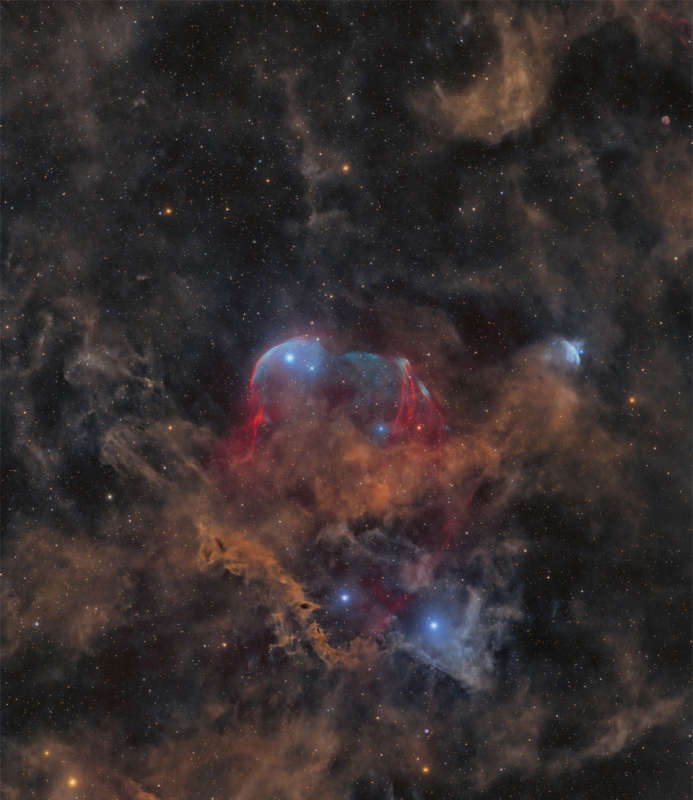
|
APOD: 2025 June 9 B Between Scylla and Charybdis: A Double Cosmic Discovery

| << Yesterday | 9.06.2025 | Tomorrow >> |

Credit & Copyright: M. Drechsler, Y. Sainty, A. Soto, N. Martino,
L. Leroux-Gere,
S. Khallouqui, & A. Kaeouach;
Text:
Ogetay Kayali
(Michigan Tech U.)
Explanation:
Can you identify this celestial object?
Likely not B because this is a
discovery image.
Massive stars forge heavy elements in their cores and,
after a few million years, end their lives in powerful
supernova explosions.
These
remnants cool relatively quickly and fade,
making them difficult to detect.
To uncover such faint, previously unknown supernova remnants,
a dedicated group of amateur astrophotographers searched through
sky surveys
for possible supernova remnant candidates.
The result: the first-ever image of supernova remnant G115.5+9.1 B
named Scylla by its discoverersBglowing faintly
in the constellation of the mythological King of Aethiopia:
Cepheus.
Emission from
hydrogen atoms in the remnant is shown in red,
and faint
emission from oxygen is shown in hues of blue.
Surprisingly, another discovery lurked to
the upper right: a faint, previously unknown
planetary nebula candidate.
In keeping with mythological tradition,
it was named Charybdis (Sai 2) B a nod to the ancient Greek expression
"caught between Scylla and Charybdis" from
HomerBs Odyssey.
|
January February March April May June July August September October November |
| |||||||||||||||||||||||||||||||||||||||||||||||||||||||
NASA Web Site Statements, Warnings, and Disclaimers
NASA Official: Jay Norris. Specific rights apply.
A service of: LHEA at NASA / GSFC
& Michigan Tech. U.
Based on Astronomy Picture
Of the Day
Publications with keywords: supernova remnant - planetary nebula
Publications with words: supernova remnant - planetary nebula
See also:
- APOD: 2025 October 1 B NGC 6960: The Witchs Broom Nebula
- APOD: 2025 August 31 B NGC 7027: The Pillow Planetary Nebula
- APOD: 2025 August 22 B A Tale of Two Nebulae
- APOD: 2025 August 5 B NGC 6072: A Complex Planetary Nebula from Webb
- APOD: 2025 July 29 B A Helix Nebula Deep Field
- APOD: 2025 July 13 B Planetary Nebula Mz3: The Ant Nebula
- APOD: 2025 May 14 B NGC 1360: The Robins Egg Nebula